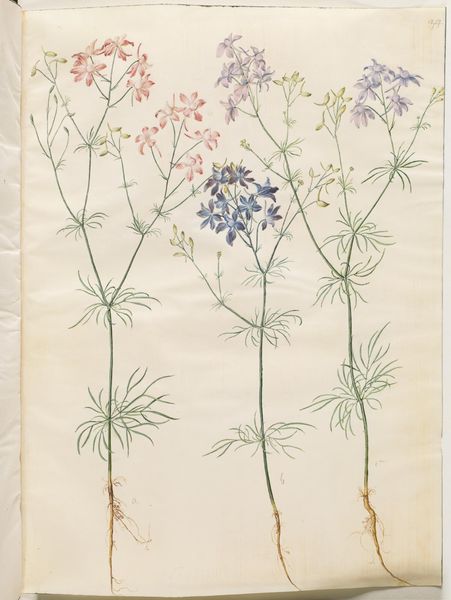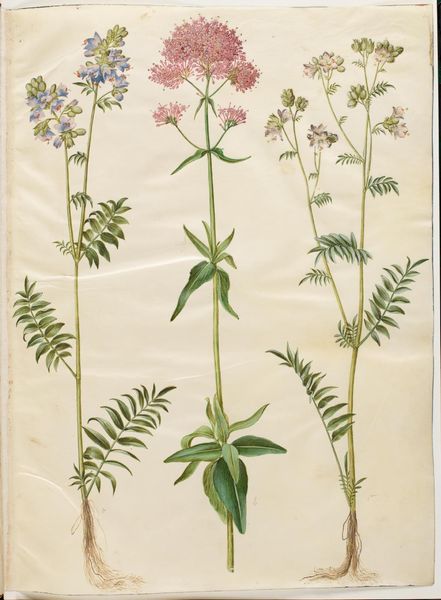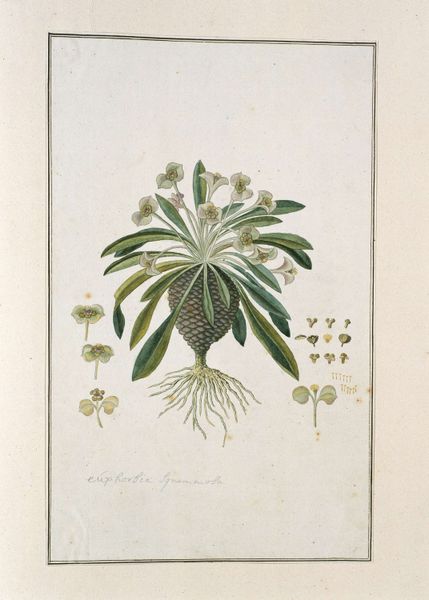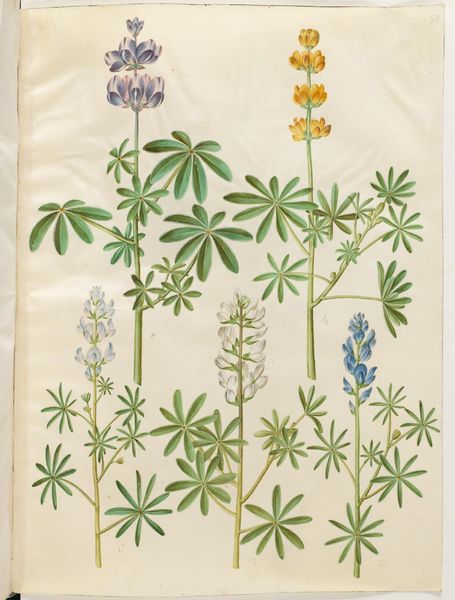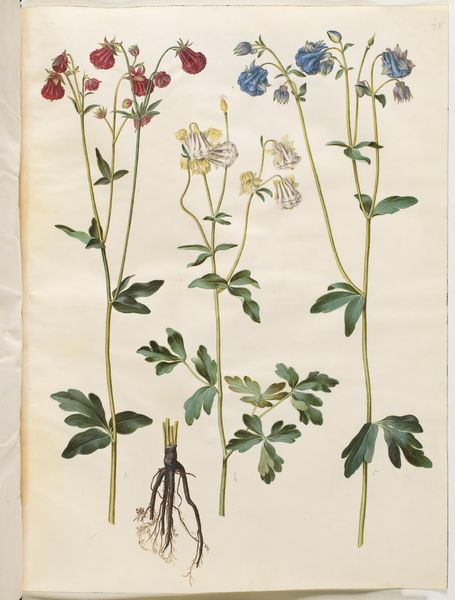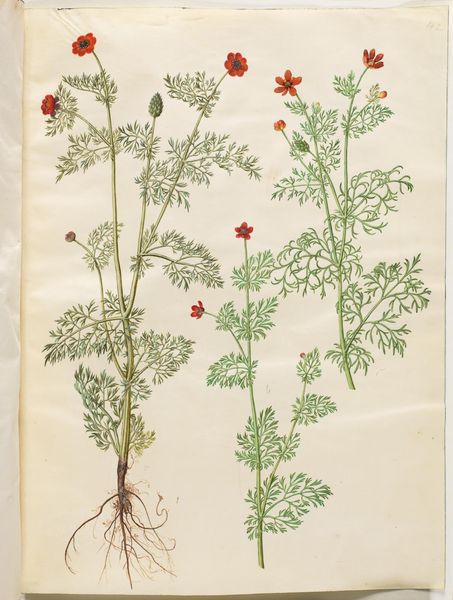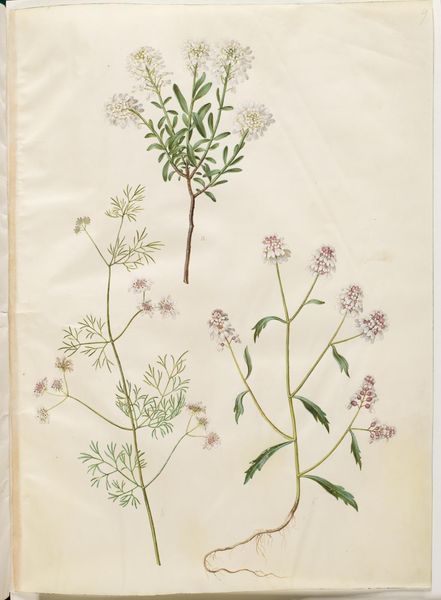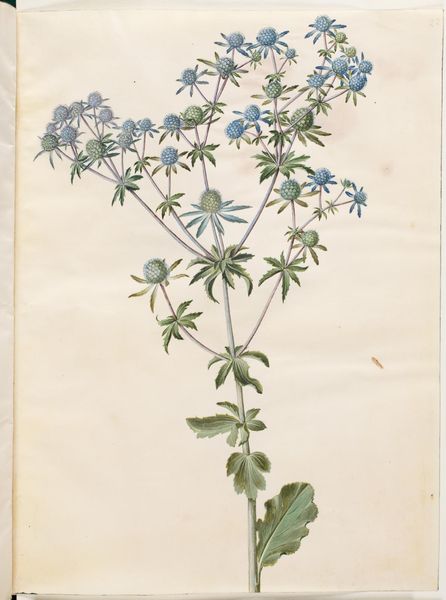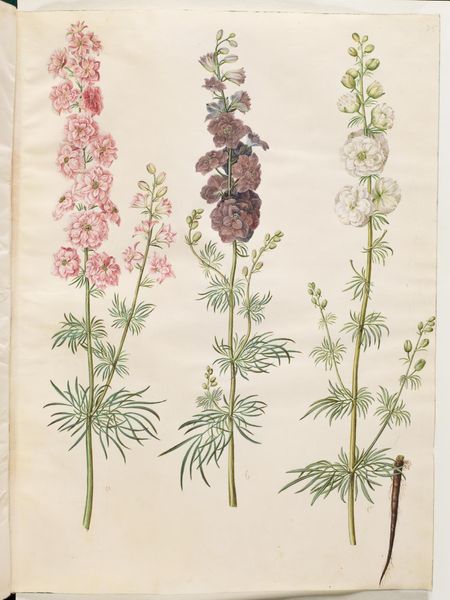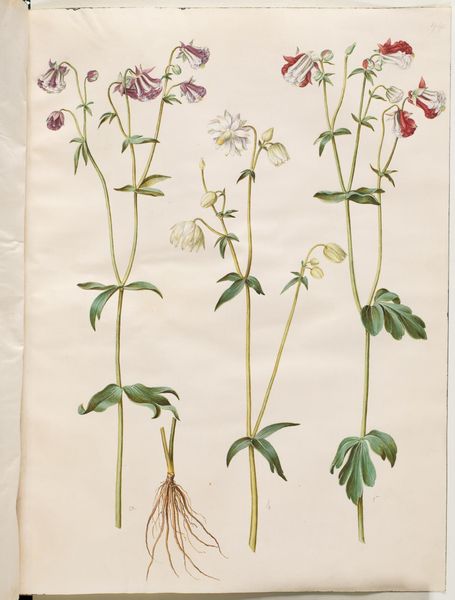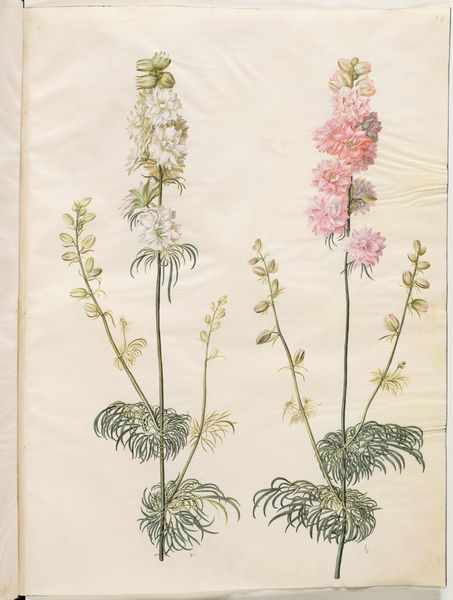
drawing, coloured-pencil, gouache, watercolor
#
drawing
#
toned paper
#
coloured-pencil
#
water colours
#
gouache
#
watercolor
#
coloured pencil
#
botanical drawing
#
botanical art
#
watercolor
#
realism
Dimensions: 505 mm (height) x 385 mm (width) (bladmaal)
Curator: Here we have a botanical study titled "Geranium pratense (eng-storkenæb)" rendered between 1649 and 1659 by Hans Simon Holtzbecker. It's executed in watercolor, gouache, and colored pencil on toned paper. Editor: It's interesting, how the plants are positioned. I immediately noticed how stark and almost clinical it appears, despite being a nature study. Curator: Precisely! Botanical illustrations during this period served not only scientific purposes but also reflected broader cultural values. Holtzbecker was connected to the court and this botanical art was used to advance status and demonstrate worldly views of patrons. The seemingly objective depiction of the geranium obscures the art's connections with elite circles and the circulation of knowledge within those structures. Editor: So it was less about representing nature for nature’s sake, and more about claiming dominion over it, reflecting the societal hierarchies of the time? The muted color palette reinforces that sense of restraint. The scientific observation transforms into something…contained. It lacks the wildness you might expect. Curator: Indeed. Moreover, consider the materiality—watercolor, gouache, and colored pencil on toned paper allowed for detailed, lifelike depictions, very much appreciated. But it’s also portable, fitting into albums, readily shared amongst a scholarly community or wealthy amateur collectors. Editor: The plant itself—the meadow geranium—perhaps was chosen intentionally. Is it particularly rare, or does it have specific medicinal associations that would elevate its importance? These sorts of pieces become politicized simply by virtue of existing; whose perspectives do they omit? Who does botanical classification benefit most directly? Curator: The choice of the Geranium pratense wasn't random, but likely related to the broader interests in botany at the time. And as a historical record, it's essential to examine what is celebrated here versus what's omitted. Editor: Exactly! So much is missed in these celebrations that simply go without saying, what's familiar, what is close by in plain sight goes unnamed and uncredited, even now. Curator: This is a prime opportunity to contextualize how images such as Holtzbecker's intersect with prevailing power structures. Editor: Right. We should challenge any art historical framework that lets power off the hook and reconsiders value.
Comments
No comments
Be the first to comment and join the conversation on the ultimate creative platform.
